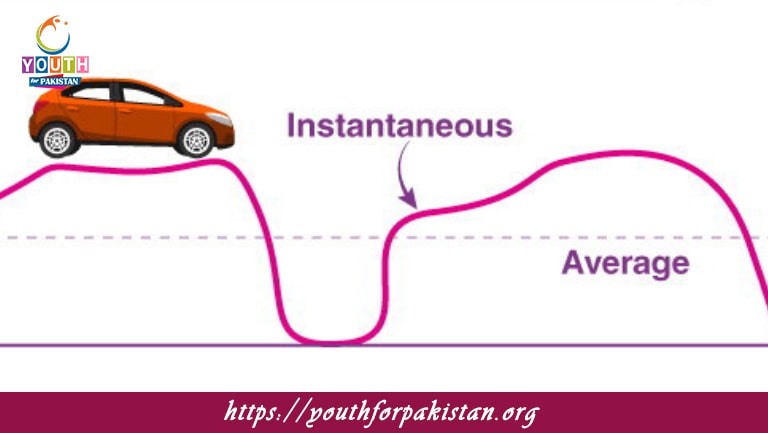Instant Aeneous Displacement MDCAT MCQs with Answers

Welcome to the Instant Aeneous Displacement MDCAT MCQs with Answers. In this post, we have shared Instant Aeneous Displacement Multiple Choice Questions and Answers for PMC MDCAT 2024. Each question in MDCAT Physics offers a chance to enhance your knowledge regarding Instant Aeneous Displacement MCQs in this MDCAT Online Test.
Instant Aeneous Displacement MDCAT MCQs Test Preparations
Instantaneous displacement is defined as:
A) The total distance traveled over time
B) The distance between two points in space
C) The position of an object at a specific instant
D) The average velocity over a time interval
Instantaneous displacement can be measured by:
A) The total length of the path traveled
B) The distance from a reference point at a specific time
C) The average velocity over a period
D) The total distance covered in a time interval
The unit of instantaneous displacement is:
A) Meters
B) Meters per second
C) Seconds
D) Meters per second squared
If an object moves along a straight line with varying speed, its instantaneous displacement is:
A) The same as the total distance traveled
B) The same as its average velocity
C) The position at a given time
D) The difference between initial and final positions
In a position-time graph, instantaneous displacement is represented by:
A) The slope of the graph
B) The area under the graph
C) The value of the position at a specific time
D) The change in position over time
To find the instantaneous displacement from a velocity-time graph, you need to:
A) Calculate the area under the graph
B) Determine the slope of the graph
C) Read the value of velocity at a specific time
D) Integrate the velocity function over time
If an object’s velocity is constant, its instantaneous displacement:
A) Is zero
B) Is equal to the average displacement
C) Changes linearly with time
D) Changes exponentially with time
When the velocity of an object is zero, its instantaneous displacement:
A) Is zero
B) Can be any value depending on previous motion
C) Is always increasing
D) Remains constant and equal to the initial displacement
The instantaneous displacement of an object in uniform circular motion:
A) Is constant
B) Changes linearly
C) Is always directed towards the center of the circle
D) Changes in magnitude but not direction
Instantaneous displacement is a function of:
A) Velocity
B) Acceleration
C) Time
D) Initial position and time
In a uniform motion along a straight path, instantaneous displacement at any time is:
A) Zero
B) The same as the total distance
C) The initial displacement plus velocity times time
D) The average of the initial and final displacements
In a position-time graph, the instantaneous displacement of an object at a specific time is indicated by:
A) The area under the curve
B) The slope of the curve
C) The vertical coordinate of the curve
D) The horizontal coordinate of the curve
For a particle in simple harmonic motion, the instantaneous displacement is:
A) Always equal to the amplitude
B) A function of the phase angle
C) Always zero
D) Constant and independent of time
The instantaneous displacement of an object in free fall is:
A) Zero
B) Equal to the initial velocity times time
C) Equal to the initial displacement plus the product of velocity and time
D) Equal to the initial displacement plus the displacement due to acceleration
When analyzing instantaneous displacement, it is important to consider:
A) The total distance traveled
B) The direction of motion
C) The average velocity
D) The time at which the measurement is taken
Instantaneous displacement in projectile motion is:
A) Only vertical
B) Only horizontal
C) The vector sum of horizontal and vertical displacements
D) Equal to the initial vertical displacement
In a velocity-time graph, the instantaneous displacement at a given time can be found by:
A) Finding the slope of the graph
B) Calculating the area under the graph
C) Reading the velocity at that time
D) Measuring the intercept of the graph
Instantaneous displacement of an object in simple harmonic motion varies with:
A) Time squared
B) The square root of time
C) Sine or cosine of the time
D) Exponential functions of time
For an object moving in a straight line, its instantaneous displacement at time t can be calculated if:
A) Its initial position and velocity are known
B) Its average velocity is known
C) The total distance covered is known
D) The acceleration and time are known
The displacement of an object in uniformly accelerated motion at any instant t is directly proportional to:
A) Time
B) Time squared
C) Velocity
D) Acceleration
To determine the instantaneous displacement of a vibrating object at any moment, you need:
A) The amplitude and frequency of vibration
B) The initial displacement and the time elapsed
C) The phase constant and amplitude
D) The velocity and time
In a graph of displacement versus time, the slope at any point indicates:
A) Velocity
B) Acceleration
C) Instantaneous displacement
D) Distance traveled
In projectile motion, the horizontal component of instantaneous displacement depends on:
A) Initial velocity
B) Acceleration due to gravity
C) Time of flight
D) Initial vertical velocity
The instantaneous displacement of an object in circular motion is best described as:
A) The distance traveled along the circumference
B) The distance from the center of the circle
C) The distance from the initial position
D) The angle subtended by the radius
The instantaneous displacement of an object moving in a curved path is:
A) The distance along the path
B) The straight-line distance from the starting point
C) The vertical displacement only
D) The horizontal displacement only
The instantaneous displacement of a pendulum at any point is:
A) Directly proportional to the amplitude
B) A function of the angle of displacement
C) Always equal to the maximum displacement
D) The same as the velocity at that point
For an object in free fall, the instantaneous displacement at any time t is:
A) The initial velocity times time
B) The distance fallen due to gravity
C) The height from which it was dropped
D) The horizontal displacement covered
The instantaneous displacement of a car moving with constant acceleration is:
A) Directly proportional to the time
B) A quadratic function of time
C) Constant
D) The integral of the acceleration
In the context of instantaneous displacement, which of the following is true?
A) It depends only on velocity
B) It can be calculated without knowing the initial position
C) It is always positive
D) It can be negative depending on the reference point
The instantaneous displacement of an object in a harmonic oscillator at maximum displacement is:
A) Zero
B) Equal to the amplitude
C) Twice the amplitude
D) Half the amplitude
If an object is moving with constant velocity, its instantaneous displacement is:
A) Constant
B) Linearly increasing with time
C) Quadratically increasing with time
D) Exponentially increasing with time
The instantaneous displacement of a wave at any point is:
A) Constant
B) Dependent on the amplitude and phase
C) Zero
D) Equal to the wavelength
In a uniform circular motion, the instantaneous displacement is:
A) Constant in magnitude but changes direction
B) Increasing at a constant rate
C) Decreasing over time
D) A function of the radial distance only
To find the instantaneous displacement from a distance-time graph, you:
A) Measure the slope at the point
B) Read the value of distance at that time
C) Calculate the area under the graph
D) Find the derivative of the distance function
Instantaneous displacement in one-dimensional motion is:
A) The average displacement over a period
B) The distance covered from the initial position at a specific time
C) The total distance traveled
D) The difference between maximum and minimum displacements
For an object moving in two dimensions, the instantaneous displacement is:
A) A single value representing distance
B) A vector with components in the x and y directions
C) The scalar magnitude of the displacement vector
D) The average position over a time interval
If you are interested to enhance your knowledge regarding Physics, Chemistry, Computer, and Biology please click on the link of each category, you will be redirected to dedicated website for each category.




